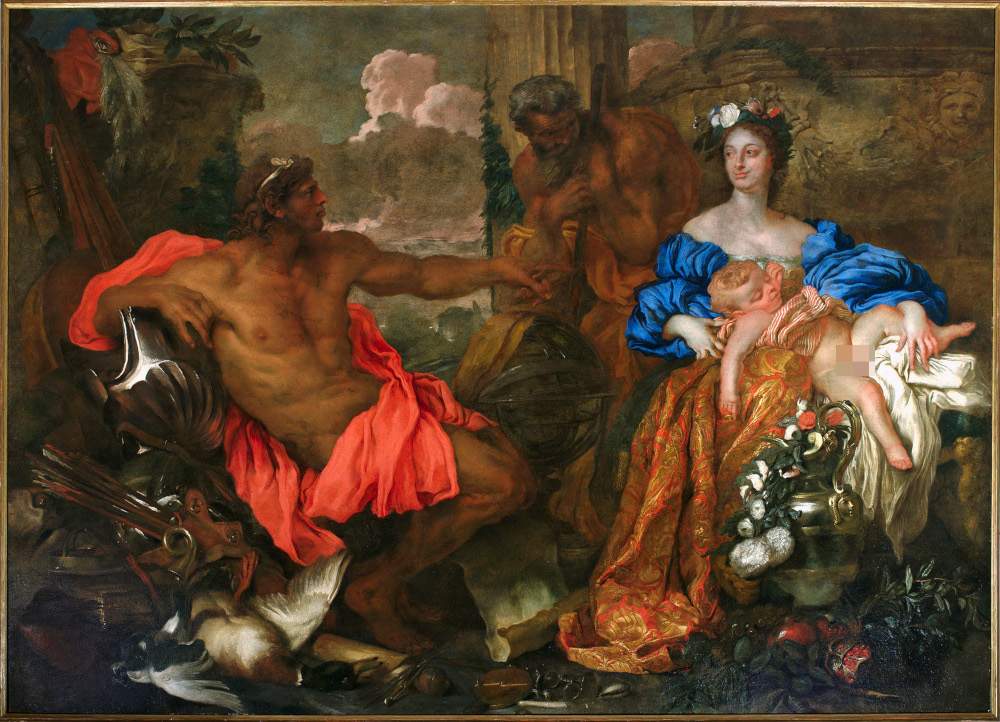Mantua's Ducal Palace, an exhibition-dossier celebrates Grechetto and his large canvas acquired for the museum
The Ducal Palace in Mantua presents from April 22 to July 23, 2023 the exhibition-dossier A Painter of Great Mastery. Grechetto Returns to Mantua, dedicated to the major new acquisition from the General Directorate of Museums (Ministry of Culture) for the collections of the Gonzaga museum.
This is a large canvas, a masterpiece by Giovanni Benedetto Castiglione known as Il Grechetto, an important master of the Italian Baroque who worked for the Gonzaga-Nevers from 1658, moving to Mantua between 1661 and 1664, when he died in the city itself. Allegoria della casata Gonzaga-Nevers, this is the title of the work, bears witness to a phase in which the cadet branch that succeeded the Gonzagas in governing the city attempted to restore splendor to the halls of the Ducal Palace.
The exhibition event will be an opportunity to shed light on a period that followed the darkest phase of the city’s history. After the sale of the art collections by Vincenzo II Gonzaga through the Flemish art dealer Daniel Nijs to the King of England, further sales sealed by Charles I Gonzaga-Nevers, and the tragic sack of Mantua in 1630, the fortunes of the Gonzaga duchy were in very difficult condition. During the regency of Charles II Gonzaga-Nevers an attempt was implemented to restore at least some of the splendor of the lineage through art. Several artists were called to the court, and the most important among them was Grechetto, who, commissioned by Charles II’s wife Isabella Clara of Austria, created the painting that is the subject of this exhibition-dossier.
The work remained in Mantua until Ferdinand Charles Gonzaga-Nevers, the last duke of the lineage and the son of Charles II and Isabella Clara, was declared a “felon” and had to repair to Venice and Padua. From there the patrimony reconstituted by the lords of Baroque Mantua dispersed, and in fact in 1711 the large canvas was admired by the English ambassador to Venice, who suggested its purchase. The painting actually arrived in England and remained there, in the Methuen collection, until 1920, when it returned to Italy. The state, however, failed to purchase it, and so it remained in a private collection until a few months ago, when the Doge’s Palace managed to secure the work, thanks to the Ministry of Culture’s General Directorate of Museums.
The large canvas, which features a complex and sumptuous allegorical garb, leading back to the celebration of the Gonzaga lineage in the presentation of the ages of man, is a work that like few others illustrates the magnificence of the Baroque and the art of an artist, Grechetto, who worked in his native Genoa in the seventeenth century, but also in Rome, Venice and many other cities: a genius who ended his days in Mantua, where a stucco memorial in the cathedral commemorates his burial.
“Of the rich production of works that Grechetto created for the lords of Mantua,” explained Palazzo Ducale Director Stefano L’Occaso, “nothing remained in the city; the return of the great Allegory of the Gonzaga-Nevers house therefore takes on a particular symbolic value, as well as being one of the Museum’s most significant acquisitions ever. The commitment of the General Directorate of Museums for the operation to be successful is a demonstration of Mantua’s centrality in the national museum system.”
Accompanying the exhibition will be a number of Gonzaga portraits: those of Isabella Clara of Austria, who commissioned the work, her husband Charles II and her son Ferdinand Charles, who would be the last duke of the line to rule over Mantua. These works are on loan from the Palazzo D’Arco Foundation and an important historical collection. The exhibition will be accompanied by a guided tour service by the reception staff of the Ducal Palace (for information 0376352100, number active Tuesday through Sunday from 9 a.m. to 1 p.m.) and a series of meetings dedicated to the Baroque in Mantua, opening the doors to the splendor of the great shows, music, theater, and ephemeral apparatuses that characterized the 17th century.
Photo by Luigino Visconti
 |
| Mantua's Ducal Palace, an exhibition-dossier celebrates Grechetto and his large canvas acquired for the museum |
Warning: the translation into English of the original Italian article was created using automatic tools. We undertake to review all articles, but we do not guarantee the total absence of inaccuracies in the translation due to the program. You can find the original by clicking on the ITA button. If you find any mistake,please contact us.





























